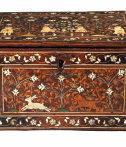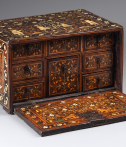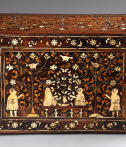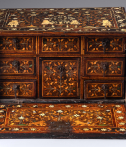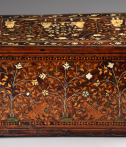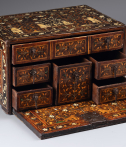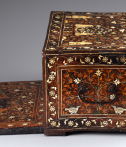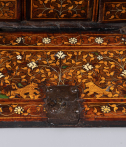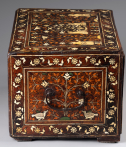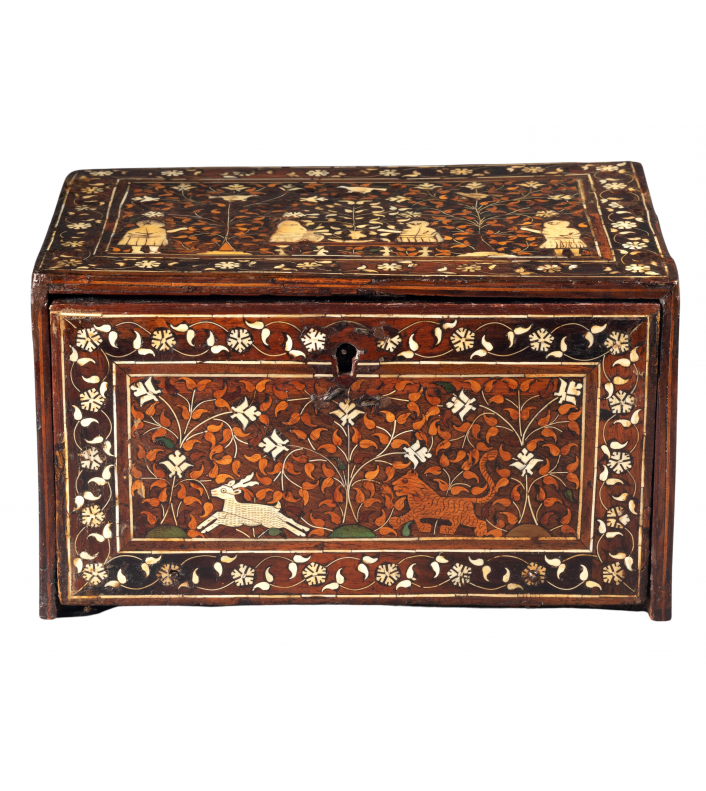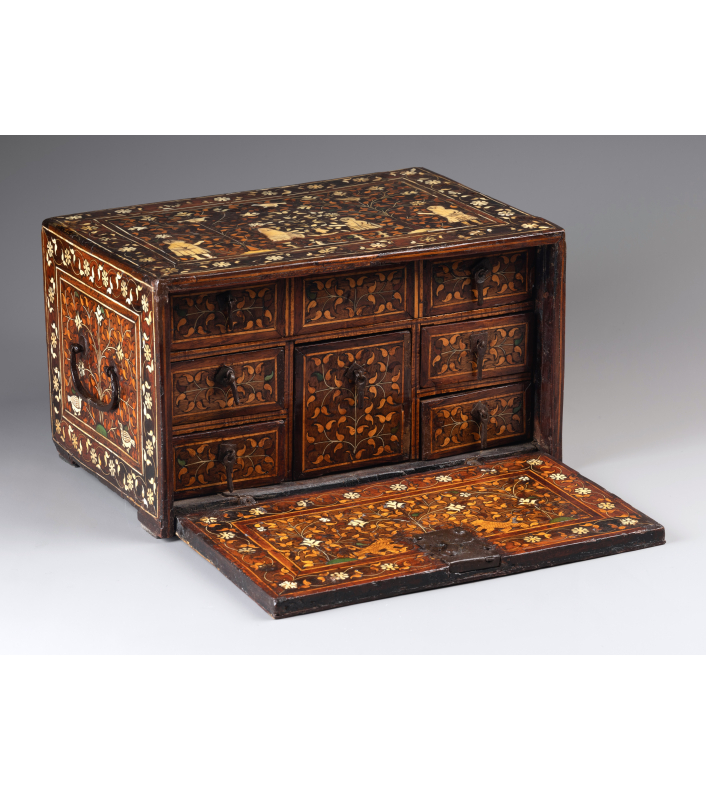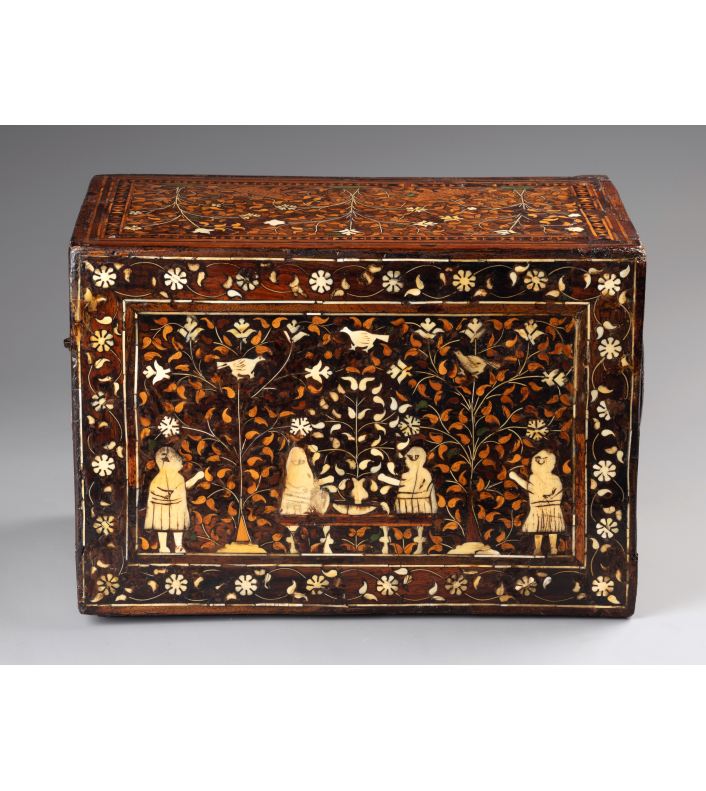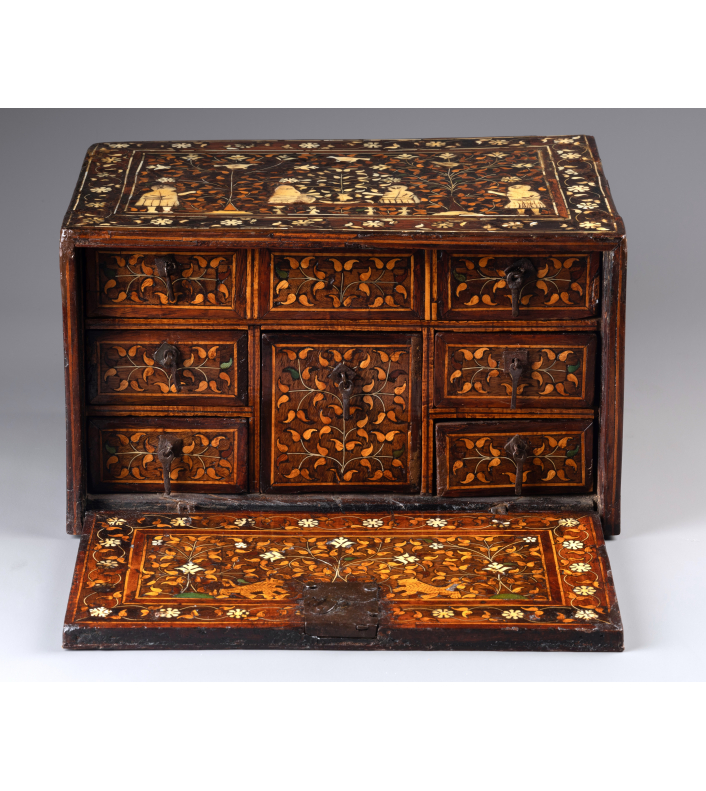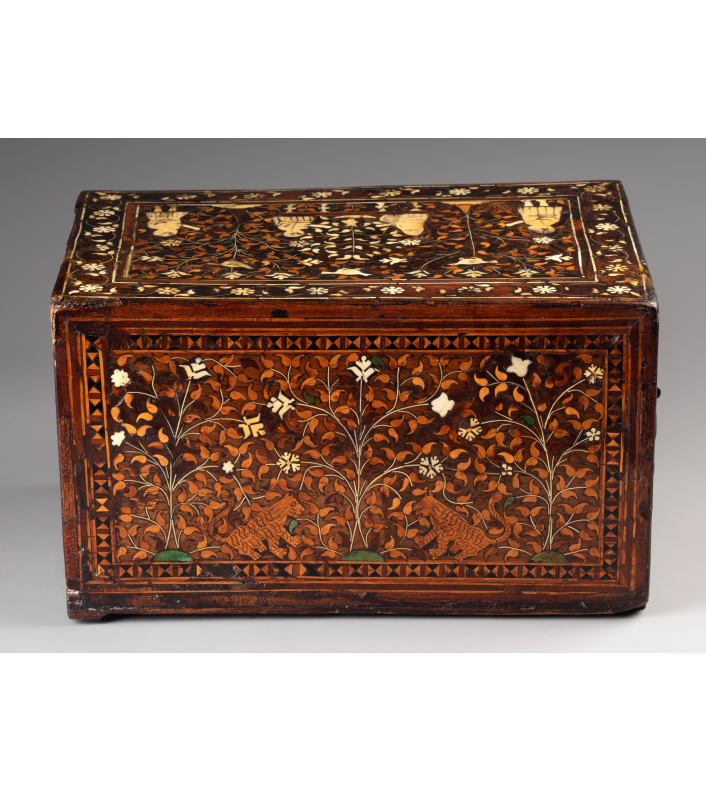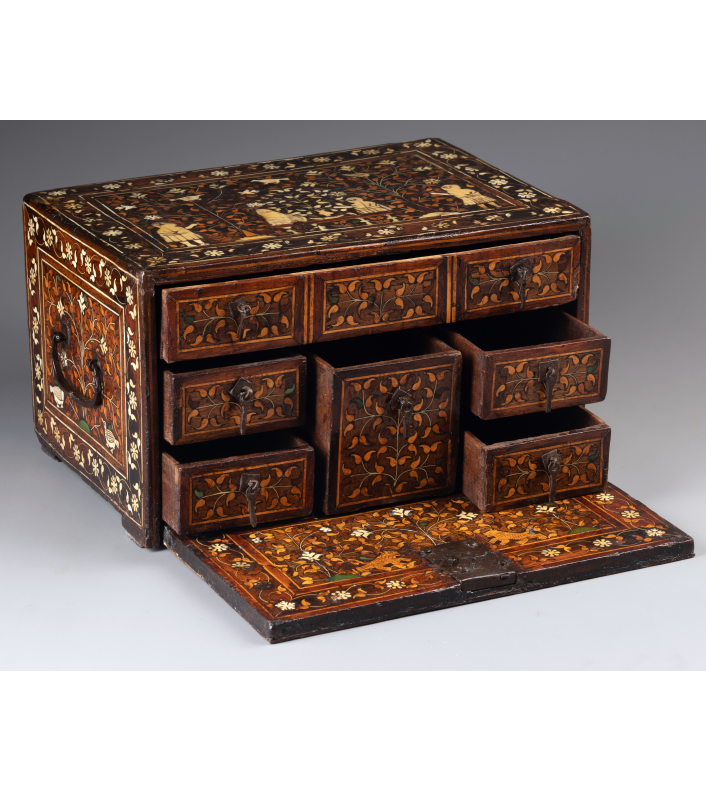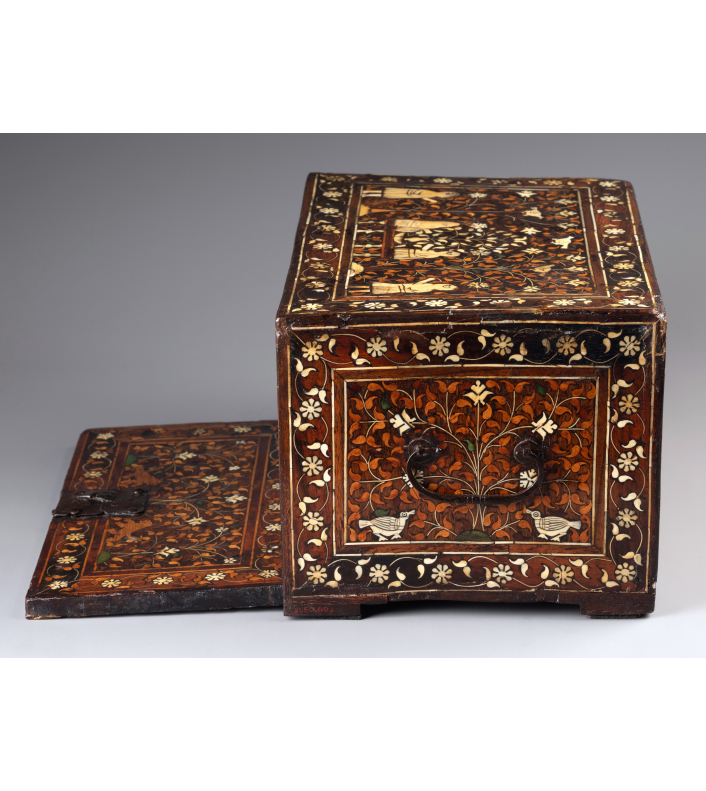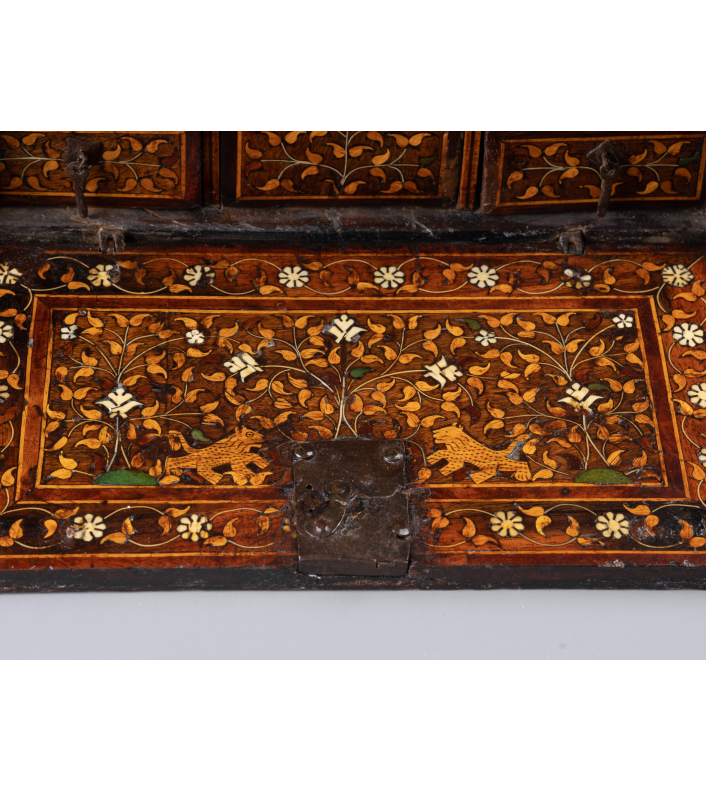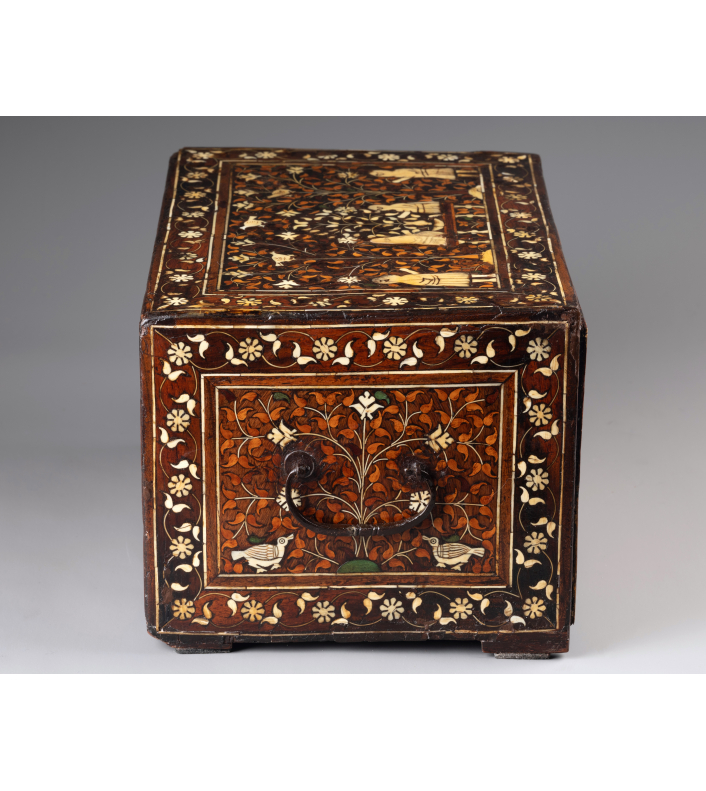Indo-Portuguese cabinet, Gujarat or Sindh
Early 17th century
Inlays of exotic woods, bone and green stained bone.
Dimensions : h. 16 cm, l. 28 cm, d. 19 cm
Our cabinet is part of the Indo-Portuguese productions of Mughal influence.
Rectangular in shape, it opens in front with a flap revealing six drawers on three registers. Adorned on all sides with marquetry and inlays of exotic woods, bone and green stained bone, it displays a profuse decoration: plant and floral ornaments rub shoulders with animals and Mughal characters in a harmonious staging.
The traditional decorative repertoire of the craftsmen is inspired by textiles and miniatures, but more generally it is an influence of Persian art on the Mughal Empire that reinterprets naturalism, with men and animals scattered on backgrounds of dense vegetation, the bone stained green to highlight the trees. Demonstrating the refinement of Mughal workshops, the figures are enhanced with engraving to accentuate the expressiveness of the characters and the coat of the animals.
The design of our cabinet is identical to the European model, the local craftsmen working according to the Western prototypes. Small handles on the sides indicate its mobile use.
Traveling cabinets were essential pieces of portable furniture for Europeans living in India - merchants or traders living and traveling in Asia were looking for this type of box with multiple drawers to hold personal belongings, small precious objects such as jewelry. Some were used as portable writing cases, with the flap serving as a writing surface and the drawers designed to hold writing materials and documents.
Representing sophisticated materials and techniques, "Indo-Portuguese" style cabinets were also eagerly sought after in Europe.
The production of this furniture was based in western India, a historic center of luxury goods with well-established merchant communities from the Middle East, Southeast Asia and Europe. Contemporary accounts differ as to where these items were made, perhaps suggesting that there were several centers working in related styles and sharing production methods, most notably in the provinces of Gujarat or Sindh
Regardless of where they were made, it is clear that travel cabinets were manufactured in large numbers and marketed both locally and in Europe, where their exotic materials and sophisticated style were eagerly sought after. As with other goods destined for Europe, cabinets of this type were frequently traded via Goa
Our cabinet belongs to one of the earliest identifiable groups of small furniture made in Gujarat and Sindh.
Related works of art:
In the Victoria & Albert Museum in London there are also several cabinets very similar to ours:
- Cabinet, h. 16.5 cm, w. 27.5 cm, d. 20 cm; inventory number 885-1905
- Cabinet, h. 16.5 cm, W 27.8 cm, D 19.5 cm; inventory number 745-1876
- Cabinet, dimensions not mentioned; inventory number 1090:1, 2-1875
On this last cabinet, we find an almost identical panel decoration illustrating "the tiger hunting the deer".



